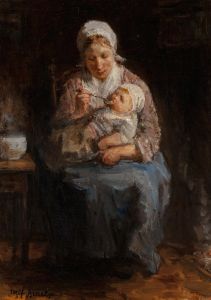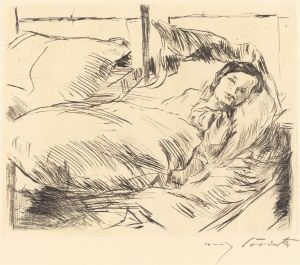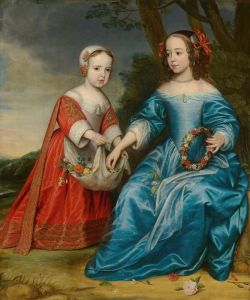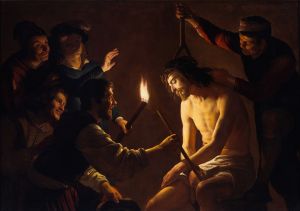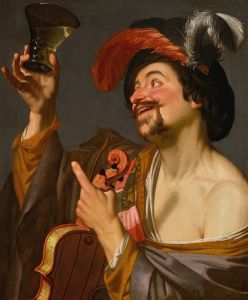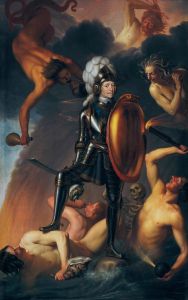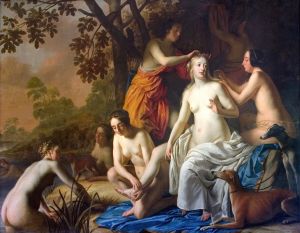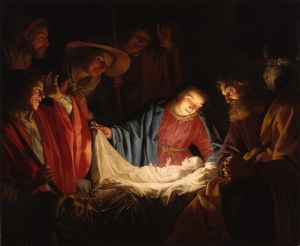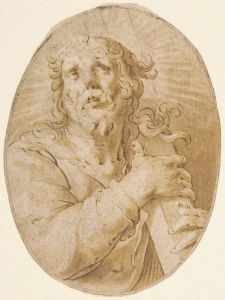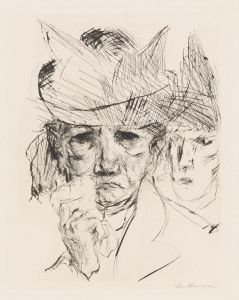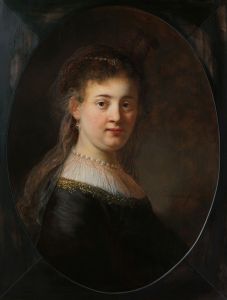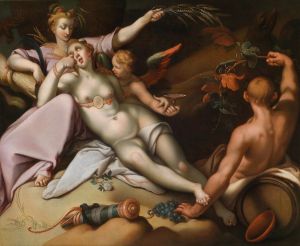
Christ Crowned with Thorns
A hand-painted replica of Gerard van Honthorst’s masterpiece Christ Crowned with Thorns, meticulously crafted by professional artists to capture the true essence of the original. Each piece is created with museum-quality canvas and rare mineral pigments, carefully painted by experienced artists with delicate brushstrokes and rich, layered colors to perfectly recreate the texture of the original artwork. Unlike machine-printed reproductions, this hand-painted version brings the painting to life, infused with the artist’s emotions and skill in every stroke. Whether for personal collection or home decoration, it instantly elevates the artistic atmosphere of any space.
Gerard van Honthorst's Christ Crowned with Thorns is a Baroque-era painting created by the Dutch artist, who was renowned for his mastery of chiaroscuro and his influence from the Italian Caravaggisti. The painting depicts the biblical scene of Christ being mocked and crowned with thorns, a moment described in the New Testament as part of the Passion of Christ. This subject was a common theme in Christian art, particularly during the Baroque period, as it emphasized the suffering and humanity of Christ.
Van Honthorst, born in Utrecht in 1592, was heavily influenced by Caravaggio during his time in Rome, and this influence is evident in Christ Crowned with Thorns. The painting showcases dramatic contrasts between light and shadow, a hallmark of the chiaroscuro technique, which van Honthorst employed to heighten the emotional intensity of the scene. The use of light focuses the viewer's attention on Christ's face, emphasizing his suffering and resignation, while the surrounding figures are partially obscured in shadow, creating a sense of depth and drama.
The composition typically includes Christ seated, with soldiers or tormentors surrounding him. They are shown mocking him, placing the crown of thorns on his head, and often holding a reed as a mock scepter. This imagery reflects the humiliation Christ endured before his crucifixion, a theme that resonated deeply with Baroque audiences, who valued emotional engagement and spiritual reflection in religious art.
While the exact date of creation for Christ Crowned with Thorns by van Honthorst is not definitively recorded, it is believed to have been painted during his mature period, after his return to Utrecht from Italy in 1620. During this time, van Honthorst became a leading figure in the Utrecht Caravaggisti movement, which sought to adapt Caravaggio's dramatic style to Dutch artistic traditions.
The painting is notable for its emotional intensity and technical skill, reflecting van Honthorst's ability to convey complex narratives through light, composition, and expression. It is one of several works by the artist that explore themes from the Passion of Christ, demonstrating his deep engagement with religious subjects.
Today, Christ Crowned with Thorns is recognized as an important example of van Honthorst's work and the broader Utrecht Caravaggisti movement. The painting is housed in a museum collection, though specific details about its current location or provenance may vary depending on the version of the work, as van Honthorst and his contemporaries often created multiple renditions of popular religious themes.





